#Hishikawa Moronobu
Text
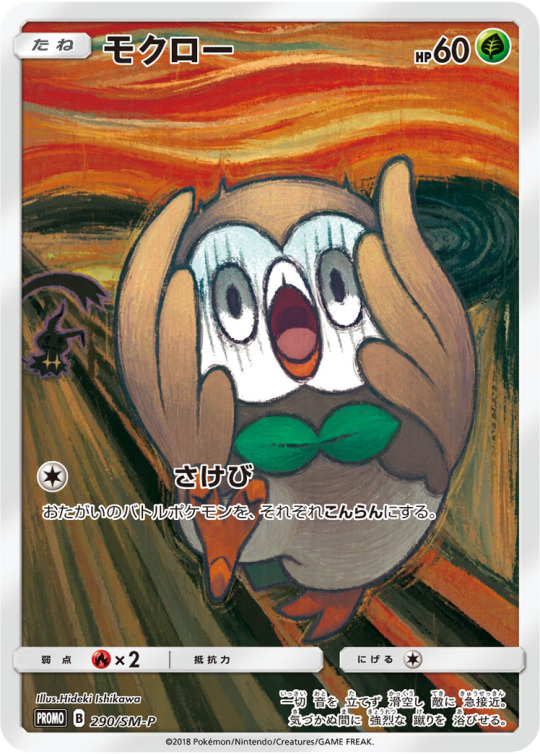


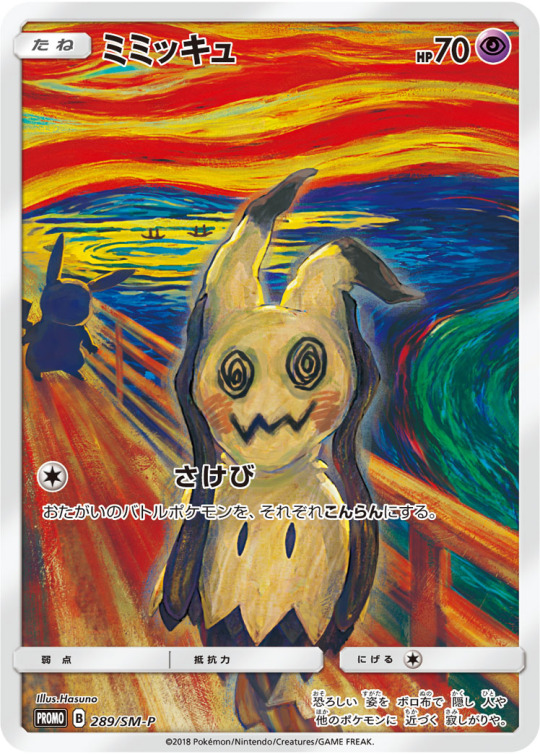
So here are some real, officially licensed Pokemon cards... And I think that they're neat as hell! :D
Hey, Pokemon Company? Can you please make more cards like these? I don't know if there are more Pokemon cards outside of these two collections that are essentially parodies of famous historical works of art, but honestly I just think that these two collections are the neatest thing! I would LOVE to own cards like these! Please make more!
#rowlet#pikachu#cramorant#mimikyu#pokemon#pokemon tcg#pokemon tcg art#color palate#color pallet meme#pkmn tcg#tcg art#tcgpokemon#trading card game#color palete challenge#color palette#Beauty Looking Back#Hishikawa Moronobu#ukiyo e#ukiyo-e#Wild Geese Flying under the Full Moon#Utagawa Hiroshige#edvard munch#the scream
182 notes
·
View notes
Text
Moronobu Gansai: A Free 17th Century Cartography Brush Set for Fantasy Maps
The Tōkaidō was the most important of the Gokaidō (Five Routes/Highways) administrated by the ruling Tokugawa shogunate during the Edo Period. Running along the coast of Honshu, this road linked the shogunate’s capital of Edo with the imperial city of Kyoto. Along this route were fifty-three government post stations where travelers had to show their traveling permits and pay their toll before…

View On WordPress
#adobe#brushes#cartography#design#edo#edo period#fantasy#free#hishikawa moronobu#honshu#illustration#japan#map making#maps#photoshop#shogunate
17 notes
·
View notes
Text

Two Beauties, Hishikawa Moronobu (1618-1694)
#art#art history#Asian art#Japan#Japanese art#East Asia#East Asian art#Hishikawa Moronobu#portrait#portrait painting#double portrait#bijin#bijinga#Feudal Japan#Edo period#17th century art#Ritsumeikan University
137 notes
·
View notes
Text

Courtesan in Reverie by Hishikawa Moronobu. 1680-94
120 notes
·
View notes
Text
Hishikawa Moronobu, Standing Woman

4 notes
·
View notes
Text
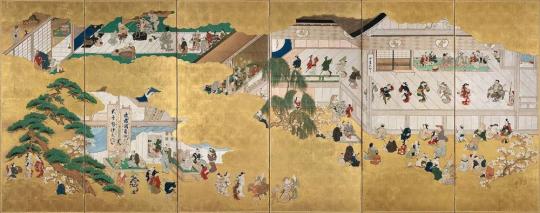
Scenes from the Nakamura Kabuki Theatre, Attributed to Hishikawa Moronobu, 17th Century
#scenes from the nakamura kabuki theatre#attributed to hishikawa moronobu#hishikawa moronobu#moronobu hishikawa#17th century#1600s#art#screen#painting
4 notes
·
View notes
Text
Ukiyo-e History: Hishikawa Moronobu, pt 3
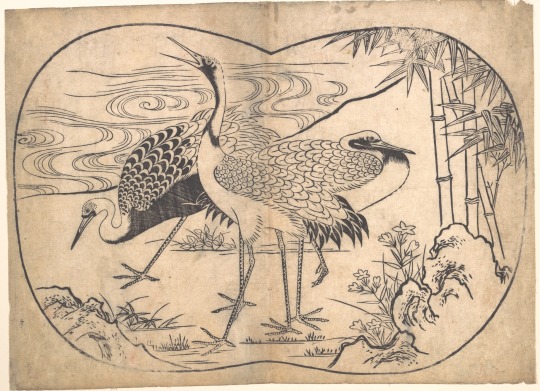
Cranes (undated)
There is still much pride taken in the early days of ukiyo-e. Swirls, curves, and fine lining were indicators of great skill and you can see that here with the feathers, leg textures, and water.

Tamuramaru (undated)
Another example of hand painting. Without dabs of color, some of the demons in this image would get lost in the details of the water and smoke. Even just a hasty splot of ink is enough to separate the monster from the texture. More of a tool than a design choice, perhaps. Or this could be an artist's proof, showing where and what colors he wanted.
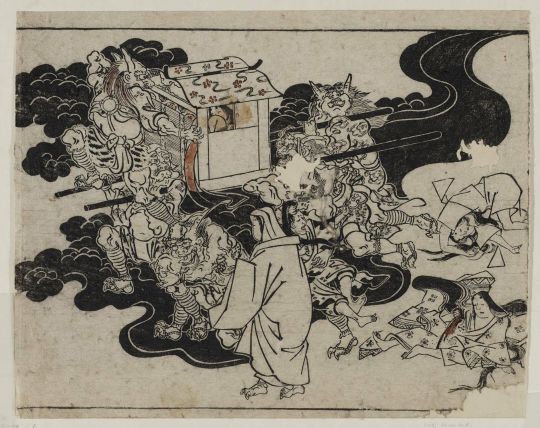
The Shutendoji Story (1680s)
Here, the colors draw you to the kidnapped maiden and the wound on the other human. The demons, on the other hand, blend together within the tangle of lines and bodies.
My Ukiyo-e History series (desktop)
Ukiyo-e History series (mobile) (will be in reverse order)
2 notes
·
View notes
Text
#ukiyo e#japanese art#woodblock print#19th century art#ukiyo e printing#ukiyo e pillows#custom printed pillows#custom pillows#printed pillows#print logo#Hishikawa Moronobu#Beauty Looking Back#Pillow 13*21
1 note
·
View note
Photo

Ida Daussy, Remarriage With The Frenchman's Son Husband 5 Years Ago "Band Compatibility Is Good" (Radio Star')
#Radio Star#Ida Daussy#Remarriage#The Frenchman's Son#City#The Princess and the Matchmaker#France#Hishikawa Moronobu#Jasin
0 notes
Text

Ogura hyakunin isshu (One hundred poets, one hundred poems). 1680.
"This illustrated book of Ogura hyakunin isshu (One hundred poets, one hundred poems) is a collection of one hundred 31-syllable classical Japanese poems (waka), each by a different poet. The collection is organized chronologically from Emperor Tenji (626-671) to Emperor Juntoku (1197-1242). Each of the poets is depicted by a woodblock print created by Hishikawa Moronobu (1618-circa 1694). Morobonu is often considered the first Ukiyo-e artist." Library of Congress
LOC
54 notes
·
View notes
Text

Beauty Turning Her Head, by Hishikawa Moronobu, ca. 1685-1694. Japan
57 notes
·
View notes
Photo
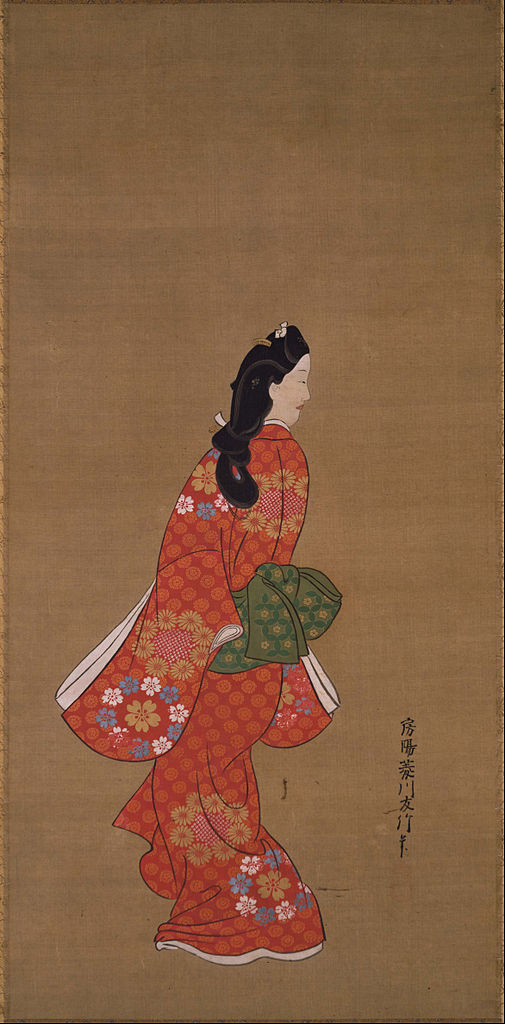
Beauty Looking Back, by Hishikawa Moronobu, 17th century
Description
25 notes
·
View notes
Text
Moronobu Mokuhanga: A Free 17th Century Cartography Brush Set for Fantasy Maps
The early Japanese road maps, or dōchūzu (道中図), became popular during the Genroku Era. These detailed (and often long) manuscripts feel more like illustrations than traditional maps. As travel along the Tōkaidō became popularized, depictions of journeys flourished. Poetry, story, song, and maps gave the peasant farmer or merchant a chance to experience the wider country and partake in a bit of…

View On WordPress
#adobe#brushes#cartography#design#edo#edo period#fantasy#free#hishikawa moronobu#honshu#illustration#japan#map making#maps#photoshop#shogunate
1 note
·
View note
Photo

An illustration depicting Kōtokuin Temple (高徳院) and its large bronze image of Amida Buddha in Kamakura as it was in the mid-17th century
From “Tales of Kamakura” (鎌倉物語 “Kamakura Monogatari”) by Nakagawa Kiun (中川喜雲) and illustrated by Hishikawa Moronobu (菱川師宣), published in 1659
Image from the temple’s official website
#buddhist temple#神奈川県#kanagawa prefecture#鎌倉市#kamakura#高徳院#kotokuin#清浄泉寺#shojosenji#鎌倉大仏#kamakura daibutsu#阿弥陀如来#阿弥陀#amida nyorai#amida#amitabha#early modern printing#book illustration#中川喜雲#nakagawa kiun#菱川師宣#hishikawa moronobu#鎌倉物語#kamakura monogatari#鎌倉名所記#kamakura meishoki
22 notes
·
View notes
Text

moronobu hishikawa's beauty looking back
#i actually had to crop it#because#you could see inoue-kun's grippers in the corner djfjgkdks#they're there in spirit#yakuza#yakuza ishin#hijikata toshizo#yoshitaka mine
18 notes
·
View notes
Text
Hishikawa Moronobu, Beauty Looking Back, 17th c

2 notes
·
View notes